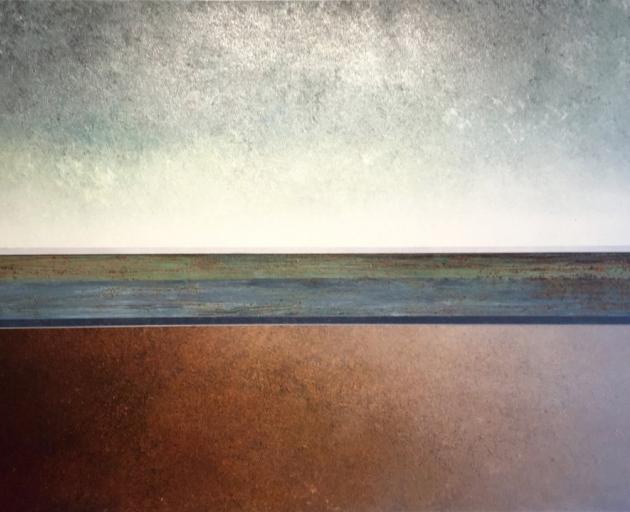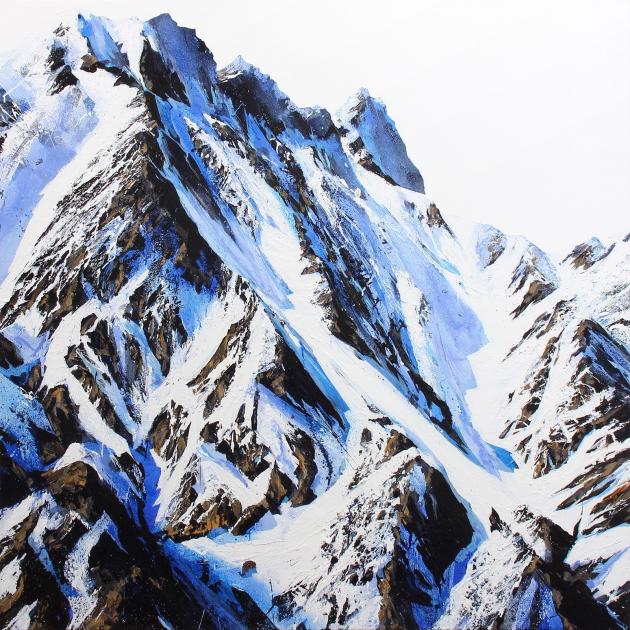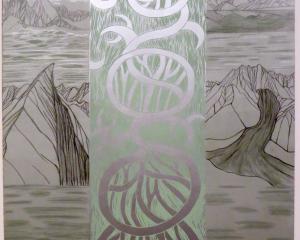In this week's Art Seen, Laura Elliott looks at exhibitions by Agneta Ekholm, Jillian Porteous, and Neil Frazer.
 Dunstan, by Richard Adams.
‘‘The Winter Collection: Three Painters’’, Agneta Ekholm, J.S. Parker and Richard Adams (Gallery Thirty Three, Wanaka)
Dunstan, by Richard Adams.
‘‘The Winter Collection: Three Painters’’, Agneta Ekholm, J.S. Parker and Richard Adams (Gallery Thirty Three, Wanaka)

Agneta Ekholm, J.S. Parker and Richard Adams all experiment with abstraction in ''The Winter Collection'' at Gallery Thirty Three, producing works that encourage an instinctive mental and emotional response.
They present the viewer with visual impressions rather than faithful reproductions, allowing the other person's imagination to travel where it will. What is particularly striking is the mood that each respective collection creates and plays to, and the way in which that changing tone results in a sense of harmony.
Walking from one artist's canvas to the next is almost like hearing three distinct and varying tempos, that nevertheless come together into one song.
There is something utterly calming about Adams' abstract landscapes with their linear bands of colour and measured composition. Distinct, recognisable symbols of the land and sky would be superfluous; each scene forms clearly in the mind regardless. It even seems familiar, imagination filling in the blanks, so that it's like looking through a haze of memory at a place you know well.
Parker's landscapes have a structural similarity with their own stripes and grids of colour, but the beat is faster here, the thick and very textural dabs and splashes of paint bringing in the strength and force of nature.
Finally, there's the sophistication and sensuality of Ekholm's canvases, in which ribbons of black and white, like smoke wisping from a snuffed candle, are set against solid blocks of colour, speaking of things earthy and ephemeral.
 Mother and Child, by Jillian Porteous
‘‘Snapshots’’, Jillian Porteous (Hullabaloo Art Space, Cromwell)
Mother and Child, by Jillian Porteous
‘‘Snapshots’’, Jillian Porteous (Hullabaloo Art Space, Cromwell)

Jillian Porteous takes her work in a new and thought-provoking direction with ''Snapshots'', painting from old photographs to delve into the social mores behind recording faces.
Each canvas depicts a Mother and Child or children, in clothing of varying antiquity, either staring out from the picture plane with the stiffness of a deliberate pose or caught in profile in a more candid moment.
Having first been frozen in perpetuity on film, the subjects are twice removed from their living selves, and Porteous' distinctive visible brushstrokes allow certain details to emerge from the background while shrouding others, as if each scene is struggling to materialise from a memory.
There is a ghostly blurring of facial features that gives a sense of universality, as if the figures could be anyone-or everyone. It seems that the true subject of the works is portraiture itself, be it through a lens or under a brush.
People take photographs and attempt to immortalise faces for many reasons; likewise, people respond to seeing those images in very different ways. A dozen pairs of eyes will look at the same snapshot without ever seeing exactly the same thing. Photographs and paintings reveal universal themes and unique experiences.
They record events and expressions, yet capture only a moment in time, and only hint at what is going on behind fixed stares and smiles. That mysterious quality, the sense of the unknown, the joyful, the wistful, the ominous, is ably reflected in Porteous' work.
 Criss Cross, by Neil Frazer
‘‘Cool Change’’, Neil Frazer (Milford Galleries, Queenstown)
Criss Cross, by Neil Frazer
‘‘Cool Change’’, Neil Frazer (Milford Galleries, Queenstown)

Abstract art often communicates through the very movement of brushstrokes, the textures and tones that can speak of careful delicacy or of frenzied energy.
Neil Frazer's current body of work has turned from abstraction to highly recognisable landscapes, but that intense focus on the way in which the paint is applied remains, and is used to brilliant effect in his depictions of the snowy peaks of Central Otago.
From a distance, his thick impasto blending of colour blurs into the grandeur of the view; up close, it's fascinatingly textural. Pieces such as Range Peak and Lost Horizon perhaps have the strongest ties to Frazer's previous abstract work.
Mountains and reflections emerge readily from the unrestrained slashes of paint, but there is more of a conscious painterly quality, a revelling in what can be done with the brush.
There is a ruggedness, a boldness, to the actual art production in Criss Cross that seems to define the elemental character of the mountains, the impossibly steep angles and jagged spikes of rocky terrain that penetrate the snow.
This is isolated, wild, difficult territory that would appear muted and idealised if rendered in soft pastel or watercolour; here, even when compressed by necessity into the dimensions of the canvas, it seems to take on a life of its own. Every drop of paint bears witness to the confidence of the hand that put it there.
-By Laura Elliott







![Untitled (c. mid 1990s, [pink 3]), by Martin Thompson, 415mm×590mm. Photo: courtesy of Brett...](https://www.odt.co.nz/sites/default/files/styles/odt_landscape_small_related_stories/public/story/2024/02/untitled_pink_3.jpg?itok=Q0aQrc9o)




